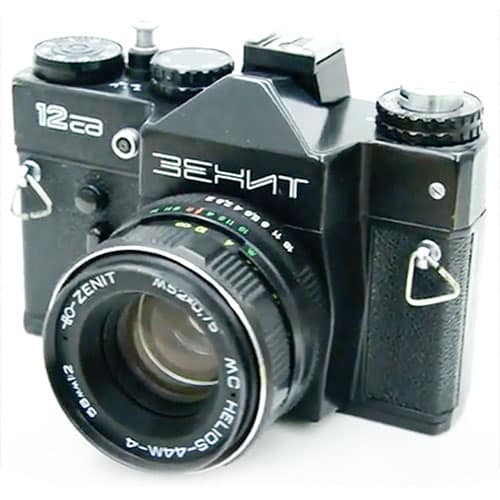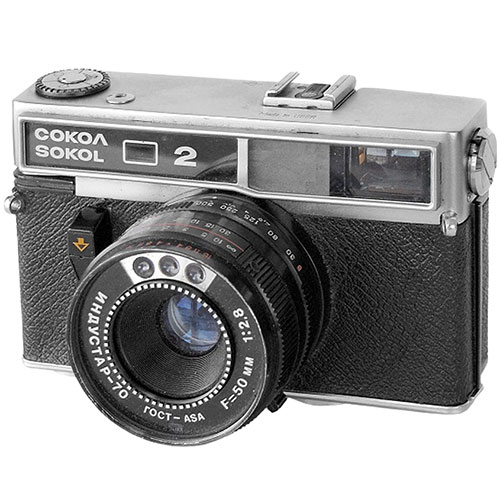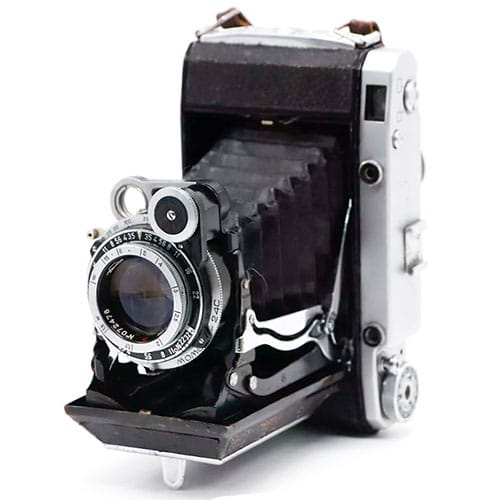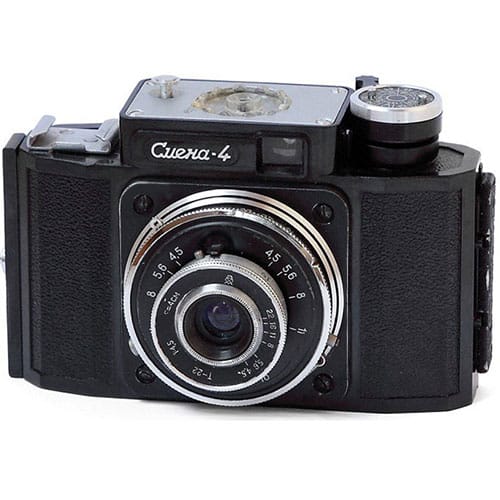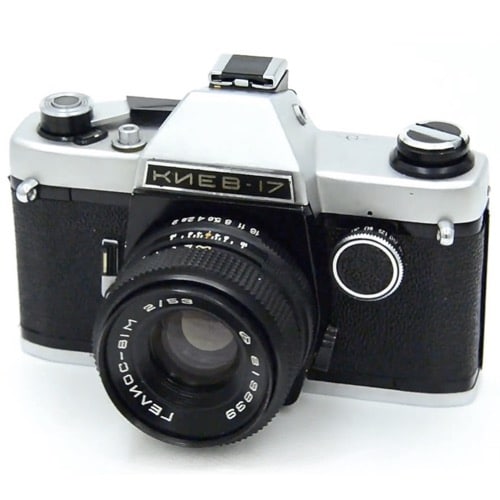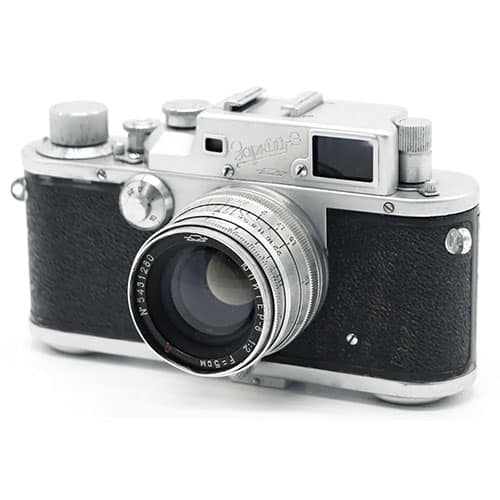Fotokor
The Fotokor-1 is one of the earliest Soviet large-format cameras. It is a folding plate camera with a 9×12 cm format and a double bellows extension.
Designed for photojournalists, this camera marked a significant step in Soviet photography.
In this article, we’ll explore how this Soviet camera was created, how it gained such popularity, and whether it’s worth buying today.
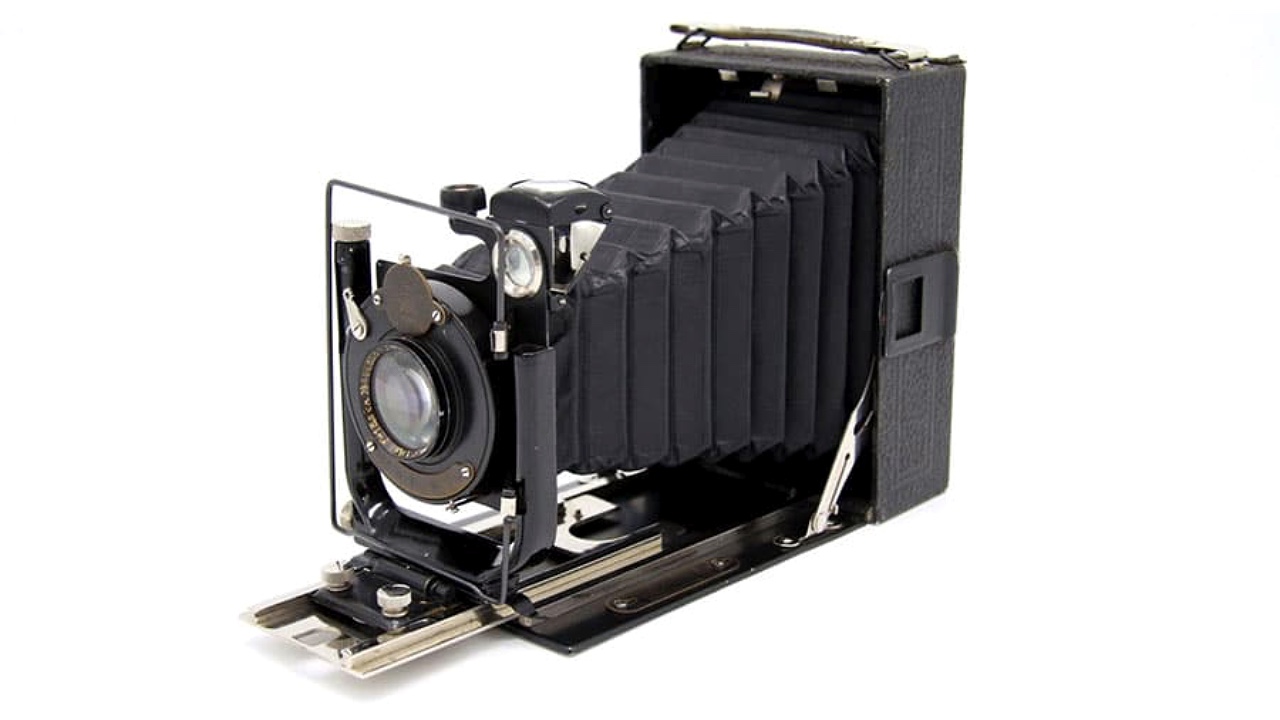
Fotokor-1 Specifications
- Type: 9×12 folding camera
- Manufacturer: GOMZ plant
- Production period: 1930–1941
- Format: 9×12 cm
- Lens mount: fixed
- Lens: Ortagoz f/4.5 135 mm
- Shutter: leaf shutter with speeds of 1/25, 1/50, and 1/100 sec, plus K and D
- Viewfinder: ground glass
- Light meter: none
- Flash synchronization: none
- Self-timer: none
- Weight: 1,150 g
Fotokor-1 Overview
Fotokor is a folding plate “universal” camera with a 9×12 cm format and a double bellows extension, the creation of which began in 1928.
In fact, it is the first Soviet mass-produced camera – over 11 years of production (from 1930 to 1941 inclusive), more than 1 million copies were manufactured.
Fotokor-1 became reasonably accessible to a wide audience and was very popular among photography enthusiasts. It was reliable and easy to use.
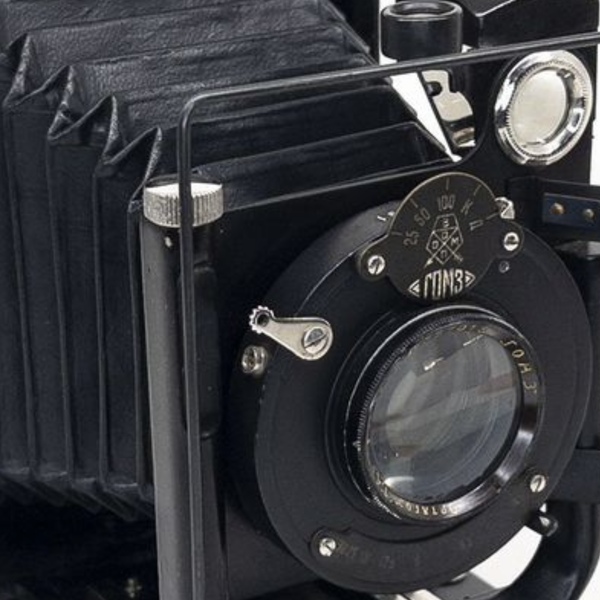
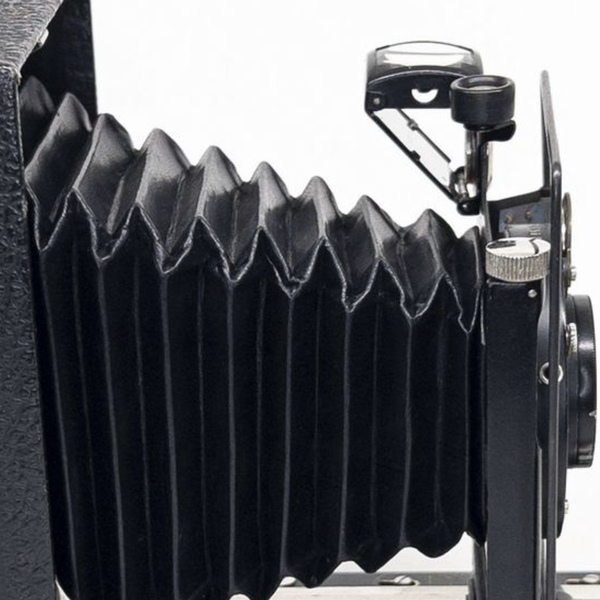
Of course, in the modern era of smartphones and fast digital cameras, it is difficult to imagine that a camera like the Fotokor-1 was once considered suitable for reporters.
However, when compared to the studio cameras of those years – which were quite challenging to assemble and disassemble for each shoot, and even more difficult to transport – the Fotokor-1’s practicality becomes evident.
Fotokor-1 Lens
The Fotokor-1 camera was equipped with a fixed lens, typically the Anastigmat Ortagoz f/4.5 with a focal length of 135mm.
This lens was designed to provide sharp and detailed images, which were suitable for both studio and outdoor photography.


In later models, the Industar-2 lens replaced the Ortagoz. The Industar-2 was based on the Tessar optical formula, known for its excellent image quality and relatively simple construction.
These lenses were not interchangeable, which was standard for cameras of this type.
A feature of the Fotokor-1 was its ability to move the front standard, where the lens was mounted, horizontally and vertically.
This allowed photographers to perform perspective corrections and make slight adjustments to framing without having to move the entire camera.

This feature was particularly useful for architectural photography, where straight lines needed to remain undistorted. The combination of a moderately fast lens and the adjustable front standard made the Fotokor-1 versatile for a variety of photographic applications.
Fotokor-1 Shutter
The shutter system of the Fotokor-1 was a classic leaf shutter, which was positioned between the lens elements. The Soviet large format camera has shutter speeds of 1/25, 1/50, and 1/100 seconds.

Additionally, the camera offered two special modes: “K,” which kept the shutter open as long as the release button was pressed, and “D,” which opened the shutter on the first press of the button and closed it on the second press.
This allowed photographers to take long-exposure photographs without the need for a dedicated shutter release cable.
Early models of the Fotokor-1 were equipped with imported German Compur or Vario shutters. The Compur shutter offered a wider range of speeds, making it suitable for more precise control of exposure.
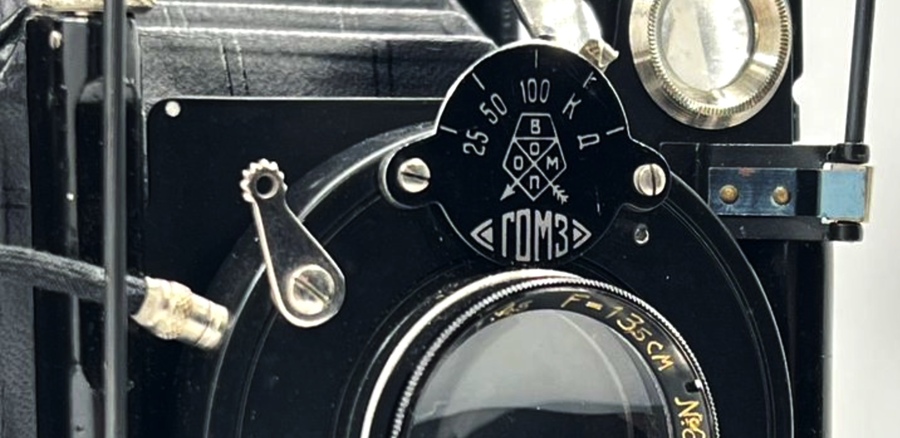
However, as the Soviet Union developed its own photographic manufacturing capabilities, these were replaced by shutters developed by GOMZ, the manufacturer of the Fotokor-1.
These Soviet-designed shutters simplified production while maintaining adequate performance for most photographic tasks of the time.

Fotokor-1 Body
The body of the Fotokor-1 was constructed from metal and was covered with black leatherette. The folding design allowed the camera to be compact when not in use, making it easier to transport compared to large studio cameras.
When unfolded, the bellows extended outward, allowing the camera to focus on subjects at varying distances.

The back of the camera featured a ground glass focusing screen, which provided a clear view for composing and focusing images.
A metal folding sports finder was also included for quick composition, especially useful in outdoor settings or for action photography.

For stability during shooting, the Fotokor-1 is equipped with tripod sockets that support both portrait and landscape orientations.
How to Use the Camera
To load the camera, the back cover must be unlocked and slid upwards to reveal the plate holder compartment. A 9×12 cm photographic plate or film holder is inserted into this space.
Once loaded, the back cover is closed securely to ensure light does not enter the camera. After taking a photograph, the plate holder is removed and either reloaded with a fresh plate or prepared for developing.

Focusing is achieved using the ground glass screen. To focus, the front cover is opened, and the bellows are extended to their operational position.
The photographer then observes the image on the ground glass and adjusts the focus by turning the focusing knob, which moves the front standard closer to or further from the film plane.
For precise focus, a loupe can be used to magnify the image on the ground glass.

The shutter speed is adjusted using a dial located on the lens or shutter assembly. The photographer can choose from the available speeds depending on the lighting conditions and subject movement.
Aperture settings, which control the amount of light entering the lens, are adjusted using a ring near the front of the lens. These two settings – shutter speed and aperture – must be carefully balanced to achieve proper exposure.

To take a photograph, the photographer either uses the ground glass screen for precise composition or relies on the sports finder for quicker framing.
Once composed and focused, the shutter release lever is pressed to take the picture. For longer exposures, the “K” or “D” modes can be used. These require careful handling, as any movement during exposure can blur the image.

Although the Fotokor-1 lacks modern conveniences such as a built-in light meter, exposure can be calculated using a handheld meter or by following general exposure guidelines for the film or plate being used.
The camera’s straightforward design makes it accessible to those familiar with basic photographic principles, and its mechanical simplicity ensures reliable operation.

Conclusion
The image quality obtained with Fotokor-1 was quite good for its time, since it was equipped with a lens that was quite modern for those times. It provided good detail, although the resolution was lower than that of German models.
Nevertheless, Fotokor-1 was popular among photographers in the USSR and was used by both professional and amateur photographers. It was fairly affordable and offered good functionality for its time.
In general, Fotokor-1 was an important step in the development of photography in the USSR and left its mark on the history of photographic equipment.
Later, the Soviet Union used a similar approach when creating other cameras, such as the Zenit or Lubitel cameras. These cameras, like the Soviet large-format camera discussed in this article, were based on German designs but were simplified and adapted to meet the needs of the Soviet audience.


